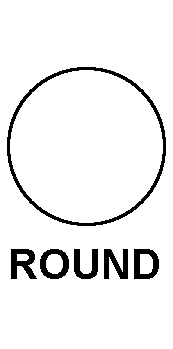6150000318655
Price Quote Get an up to date pricing and availability quote for this product. Order online or over the phone.
Quality Commitment
Serving our customers with quality and safety first.
- AS9120 Certified
- Audited supply chain
- ITAR Registered
- DDTC Registered
- HAZMAT Certified
- Customer service objectives
- Every product 100% inspected

6150-00-031-8655 Specification Set by the OEM (see RNCC code 3)
round
4.500 feet
C-54 (fms) , B-54G/h acfts
prod terminal 2nd end all conductors
2
0.156in. 1st end second conductor
T-62 1st end first conductor
89381 1st end second conductor
3.500in. 1st end first conductor
as per a.c. spec no. 94-27971-A; length plus 1 ft, minus 0; impedance 1 ohm porm 0.025; 1st end, 1st conductor has screw (6-32 thread) with nut retainer
yellow 1st position primary insulation second conductor
iron core conductor first conductor
dual lugs
Cross Reference Parts Part numbers that meet the specification outlined on this page and set by the OEM
Identification Item Identification Guide (IIG) and Item Name Code (INC)


Definition Definition of approved item name (AIN): "CABLE ASSEMBLY,THERMOCOUPLE"
A definite continuous length of thermouple wire or thermocouple extension wire, having one or more ends processed or terminated in fittings which provide for connection to other items. Used with devices that measure temperature. The primary wire materials are iron, constantan, copper, chromel, alumel and the like.
6150-00-031-8655 Material Hazmat, Precious Metals, Criticality, Enviroment, and ESD
Indicates there is no data in the hmirs and the nsn is in a fsc not generally suspected of containing hazardous materials.
Precious metal content is unknown
Represents items with no adp components
The item does not have a nuclear hardened feature or any other critical feature such as tolerance, fit restriction or application.
Identification Codes
HMIC: Hazardous Material Indicator Code. A one position code that identifies a hazardous item.
PMIC: Precious Metal Indicator Code. A one position code which identifies items that have precious metals as part of their content. precious metals are those metals generally considered to be uncommon, highly valuable, and relatively superior in certain properties such as resistance to corrosion and electrical conductivity.
ESD: Electrostatic Discharge. Indicates if an item is susceptible to electrostatic discharge or electromagnetic interference damage. electrostatic discharge damage occurs when an accumulation of static electricity generated by the relative motion or separation of materials is released to another item by direct contact. electromagnetic interference damage occurs when an item comes into proximity with an electrostatic or magnetic field.
ENAC: Enviromental Attribute Code. Identifies items with environmentally preferred characteristics.
CRITL: Criticality Indicator Code. Indicates an item is technically critical by tolerance, fit, application, nuclear hardness properties, or other characteristics.






